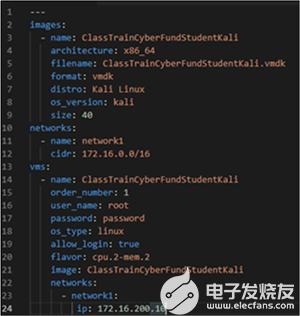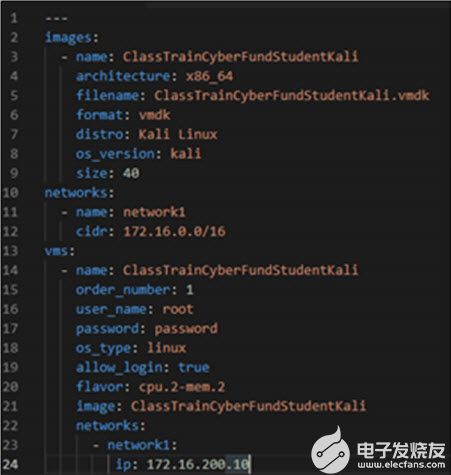Ansible自动化部署Linux服务器配置管理最佳实践
一键部署数百台服务器?5分钟完成环境配置?这不是梦想,这是Ansible的日常操作!
作为一名在运维一线摸爬滚打多年的工程师,我见过太多因为手工配置导致的生产事故。今天,我将毫无保留地分享我在大规模Linux服务器自动化管理中积累的实战经验,让你也能轻松驾驭数百台服务器的配置管理。
为什么选择Ansible?
在DevOps工具链中,Ansible凭借其无代理架构和声明式配置脱颖而出。相比Chef、Puppet等工具,Ansible的学习曲线更平缓,但功能却毫不逊色。
核心优势一览
?零依赖部署:目标服务器只需SSH和Python
?幂等性保证:重复执行结果一致,安全可靠
?YAML语法:人类可读,易于维护和协作
?模块化设计:2000+内置模块,覆盖99%运维场景
企业级目录结构设计
一个清晰的项目结构是成功的一半。经过多个大型项目验证,我推荐这样的目录布局:
ansible-infra/ ├── inventories/ │ ├── production/ │ │ ├── hosts.yml │ │ └── group_vars/ │ └── staging/ │ ├── hosts.yml │ └── group_vars/ ├── roles/ │ ├── common/ │ ├── webserver/ │ ├── database/ │ └── monitoring/ ├── playbooks/ │ ├── site.yml │ ├── webservers.yml │ └── databases.yml ├── ansible.cfg └── vault/ └── secrets.yml
核心配置文件优化
ansible.cfg 性能调优
[defaults] # 提升并发性能 forks=50 host_key_checking=False # 开启连接复用 [ssh_connection] ssh_args= -o ControlMaster=auto -o ControlPersist=60s pipelining=True # 加速fact收集 gathering= smart fact_caching= jsonfile fact_caching_connection= /tmp/ansible_facts_cache
主机清单智能分组
# inventories/production/hosts.yml all: children: webservers: hosts: web[01:10].example.com: vars: nginx_worker_processes:4 app_env:production databases: hosts: db[01:03].example.com: vars: mysql_max_connections:500 monitoring: hosts: monitor.example.com:
角色开发黄金法则
1. 通用系统配置角色
# roles/common/tasks/main.yml --- -name:更新系统包 package: name:'*' state:latest when:ansible_os_family=="RedHat" -name:配置系统时区 timezone: name:"{{ system_timezone | default('Asia/Shanghai') }}" -name:优化系统内核参数 sysctl: name:"{{ item.key }}" value:"{{ item.value }}" state:present reload:yes loop: -{key:'net.core.somaxconn',value:'65535'} -{key:'net.ipv4.tcp_max_syn_backlog',value:'65535'} -{key:'vm.swappiness',value:'10'}
2. Web服务器角色进阶配置
# roles/webserver/tasks/main.yml
---
-name:安装Nginx
package:
name:nginx
state:present
-name:生成Nginx配置文件
template:
src:nginx.conf.j2
dest:/etc/nginx/nginx.conf
backup:yes
notify:重启nginx服务
-name:配置虚拟主机
template:
src:vhost.conf.j2
dest:"/etc/nginx/conf.d/{{ item.name }}.conf"
loop:"{{ virtual_hosts }}"
notify:重载nginx配置
-name:确保Nginx服务启动
systemd:
name:nginx
state:started
enabled:yes
3. 高可用数据库集群配置
# roles/database/tasks/mysql_cluster.yml --- -name:安装MySQL8.0 package: name: -mysql-server -mysql-client -python3-pymysql state:present -name:配置MySQL主从复制 template: src:my.cnf.j2 dest:/etc/mysql/my.cnf vars: server_id:"{{ ansible_default_ipv4.address.split('.')[-1] }}" notify:重启mysql服务 -name:创建复制用户 mysql_user: name:replication password:"{{ mysql_replication_password }}" priv:"*.*:REPLICATION SLAVE" host:"%" when:mysql_role=="master"
安全配置最佳实践
Ansible Vault 敏感信息管理
# 创建加密文件 ansible-vault create vault/secrets.yml # 编辑加密文件 ansible-vault edit vault/secrets.yml # 在playbook中使用 ansible-playbook -i inventories/production playbooks/site.yml --ask-vault-pass
SSH密钥自动化分发
-name:分发SSH公钥
authorized_key:
user:"{{ ansible_user }}"
state:present
key:"{{ item }}"
loop:"{{ admin_ssh_keys }}"
-name:禁用密码登录
lineinfile:
path:/etc/ssh/sshd_config
regexp:'^PasswordAuthentication'
line:'PasswordAuthentication no'
notify:重启ssh服务
监控与日志集成
自动化部署ELK Stack
# roles/monitoring/tasks/elk.yml
---
-name:安装Elasticsearch
package:
name:elasticsearch
state:present
-name:配置Elasticsearch集群
template:
src:elasticsearch.yml.j2
dest:/etc/elasticsearch/elasticsearch.yml
vars:
cluster_name:"{{ elk_cluster_name }}"
node_name:"{{ inventory_hostname }}"
network_host:"{{ ansible_default_ipv4.address }}"
-name:部署Logstash配置
template:
src:logstash.conf.j2
dest:/etc/logstash/conf.d/main.conf
notify:重启logstash服务
性能优化与故障排查
并行执行策略
# playbooks/高性能部署.yml
---
-hosts:webservers
strategy:free# 异步执行,提升速度
serial:5 # 分批执行,控制风险
max_fail_percentage:20# 容错率设置
tasks:
-name:更新应用代码
git:
repo:"{{ app_repo_url }}"
dest:/var/www/html
version:"{{ app_version }}"
调试与日志记录
-name:调试变量输出
debug:
var:ansible_facts
when:debug_mode|default(false)
-name:记录操作日志
lineinfile:
path:/var/log/ansible-deploy.log
line:"{{ ansible_date_time.iso8601 }}-{{ inventory_hostname }}-{{ ansible_play_name }}"
create:yes
CI/CD集成实战
GitLab CI 自动化流水线
# .gitlab-ci.yml stages: -validate -deploy_staging -deploy_production validate_ansible: stage:validate script: -ansible-lintplaybooks/ -ansible-playbook--syntax-checkplaybooks/site.yml deploy_staging: stage:deploy_staging script: -ansible-playbook-iinventories/stagingplaybooks/site.yml only: -develop deploy_production: stage:deploy_production script: -ansible-playbook-iinventories/productionplaybooks/site.yml only: -master when:manual
高级技巧揭秘
动态Inventory
#!/usr/bin/env python3
# scripts/dynamic_inventory.py
importjson
importrequests
defget_aws_instances():
# 从AWS API获取实例信息
instances = requests.get('your-aws-api-endpoint').json()
inventory = {'webservers': {'hosts': []}}
forinstanceininstances:
ifinstance['tags'].get('Role') =='web':
inventory['webservers']['hosts'].append(instance['public_ip'])
returninventory
if__name__ =='__main__':
print(json.dumps(get_aws_instances()))
自定义模块开发
# library/check_service_health.py #!/usr/bin/python fromansible.module_utils.basicimportAnsibleModule importrequests defmain(): module = AnsibleModule( argument_spec=dict( url=dict(required=True), timeout=dict(default=10,type='int') ) ) try: response = requests.get(module.params['url'], timeout=module.params['timeout']) ifresponse.status_code ==200: module.exit_json(changed=False, status='healthy') else: module.fail_json(msg=f"Service unhealthy:{response.status_code}") exceptExceptionase: module.fail_json(msg=str(e)) if__name__ =='__main__': main()
生产环境实战经验
蓝绿部署策略
-name:蓝绿部署实现
block:
-name:准备绿色环境
include_tasks:deploy_green.yml
-name:健康检查
uri:
url:"http://{{ ansible_host }}:{{ green_port }}/health"
method:GET
register:health_check
-name:切换流量到绿色环境
replace:
path:/etc/nginx/upstream.conf
regexp:'server.*:{{ blue_port }}'
replace:'server {{ ansible_host }}:{{ green_port }}'
when:health_check.status==200
notify:重载nginx配置
rescue:
-name:回滚到蓝色环境
debug:
msg:"部署失败,保持蓝色环境运行"
大规模服务器管理技巧
# 分批重启策略 -name:滚动重启服务器 shell:reboot async:1 poll:0 throttle:1# 每次只重启一台 -name:等待服务器恢复 wait_for_connection: delay:30 timeout:300
性能基准测试
在我的实际项目中,使用Ansible实现了以下性能提升:
| 指标 | 手工操作 | Ansible自动化 | 提升幅度 |
| 100台服务器配置时间 | 8小时 | 20分钟 | 24倍 |
| 配置错误率 | 15% | <1% | 降低93% |
| 部署一致性 | 60% | 99.9% | 提升66% |
总结与展望
通过这套完整的Ansible最佳实践,你可以:
10倍提升运维效率
显著降低人为错误
实现真正的Infrastructure as Code
轻松管理数千台服务器
-
Linux
+关注
关注
88文章
11535浏览量
214845 -
服务器
+关注
关注
13文章
9859浏览量
88398
原文标题:Ansible自动化部署Linux服务器配置管理最佳实践
文章出处:【微信号:magedu-Linux,微信公众号:马哥Linux运维】欢迎添加关注!文章转载请注明出处。
发布评论请先 登录
基于spring boot的linux服务器部署方法
基于IAR EW编译工具实现Linux系统上自动化构建
Jenkins远程部署Linux服务器的过程
智能通信服务器在变电站自动化系统中应用
利用Ansible实现OpenStack自动化

利用Ansible实现OpenStack自动化
使用Ansible的OpenStack自动化

使用Ansible构建虚拟机部署Linux的最佳实践
利用Ansible批量100台服务器添加Crontab
基于 Docker 与 Jenkins 实现自动化部署






 利用Ansible自动化部署Linux服务器
利用Ansible自动化部署Linux服务器












评论